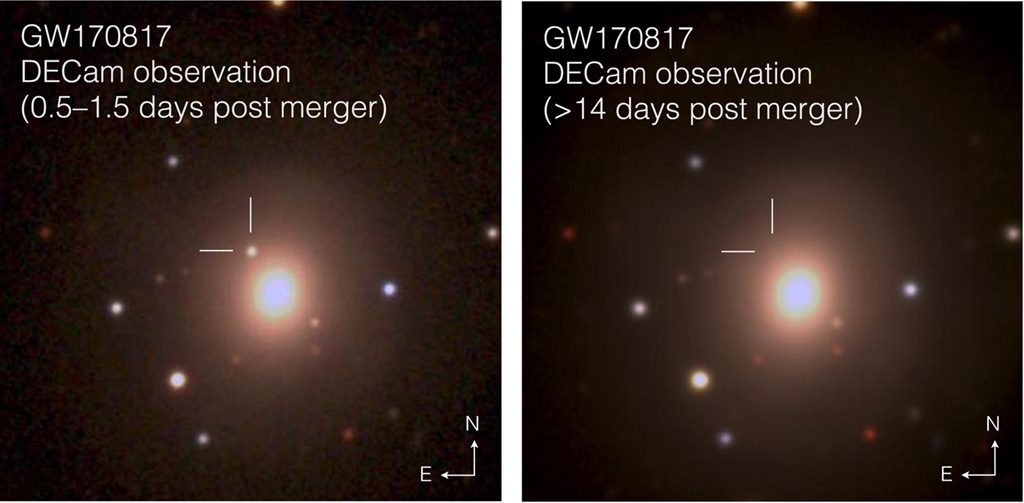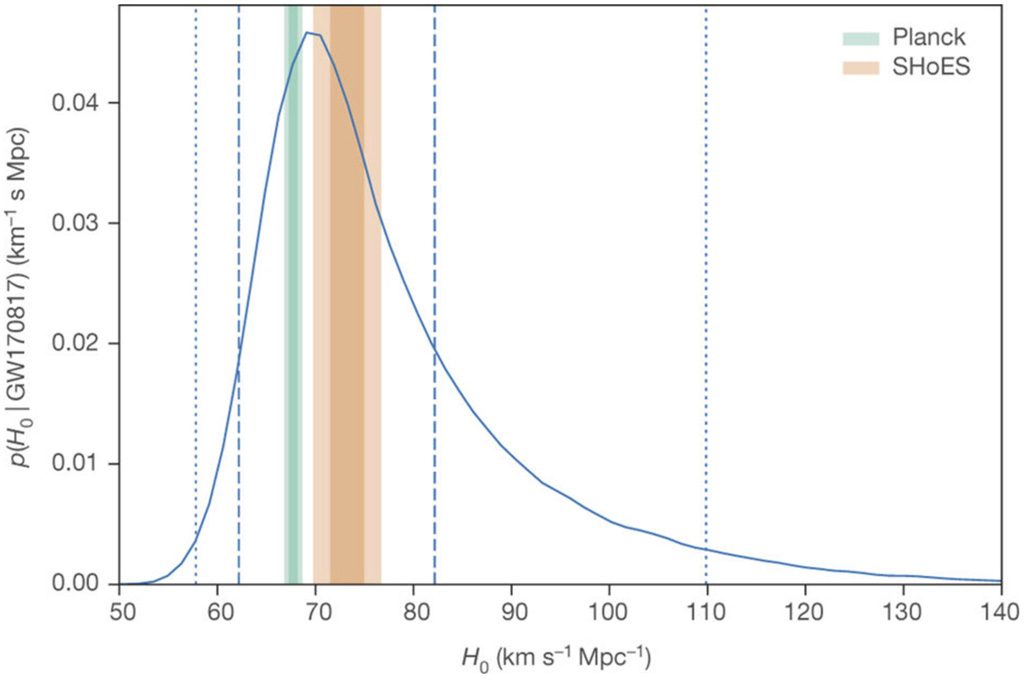In early 2016, the LIGO and Virgo Collaborations announced the first detection of gravitational waves, coming from a merger of two black holes, a discovery that led to the award of the 2017 Nobel Prize in Physics to three leading LIGO scientists. In 2017, LIGO and Virgo reported the first observation (GW170817) of gravitational waves coming from the merger of two neutron stars. The relevance lies in the fact that, contrary to a merger of two black holes, a merger of two neutron stars gives rise to electromagnetic waves, which can be detected on Earth. The combined observation of gravitational and electromagnetic waves from the same event enables a wide spectrum of astrophysical and cosmological studies, ranging from tests of quantum gravity models to a brand new method to determine the expansion rate of the Universe, and has been chosen as 2017 Breakthrough of the Year by the Science journal.
The DECam camera of the Dark Energy Survey (DES) was one of the first optical instruments that reported the detection of an electromagnetic counterpart of GW170817, a few hours after the detection of the gravitational waves. The IFAE group led by Ramon Miquel was responsible for the design and production of most of the read-out electronics for the 74 CCDs in DECam. The electromagnetic signal observed by DECam and others pinpoint the host galaxy (NGC 4993) where the merger took place, together with its redshift and, hence, its recession velocity. On the other hand, the analysis of the detected gravitational wave signal provides the distance to the merger. Putting both things together, one can infer the current rate of expansion of the Universe, or Hubble constant, a parameter whose precise value has recently generated considerable controversy, to be H0 = (70 -12-8) km s-1 Mpc-1. While the precision achieved with this one event is rather limited, this kind of multi-messenger astronomy opens the possibility of an accurate and independent measurement of H0 in the near future.
References

